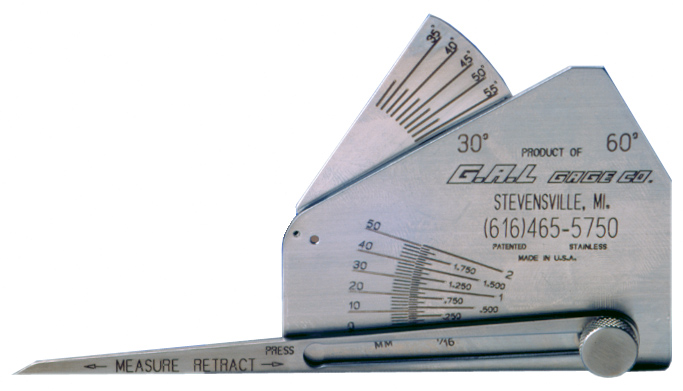The Ultimate Overview to Fillet Weld Top Quality Control: Guaranteeing Strength and Durability in Your Welded Joints
In the realm of welding, making sure the toughness and resilience of fillet welds is vital for the honesty of bonded joints. As we embark on this expedition of fillet weld high quality control, we will certainly reveal essential elements that affect weld stamina, dive right into reliable inspection techniques, and review methods for protecting against common weld problems.
Value of Fillet Weld High Quality Control
Making certain correct fillet weld top quality control is paramount in ensuring the architectural honesty and longevity of welded components in various industries. Fillet welds are commonly used in structural steelwork, bridges, stress vessels, pipelines, and various other important framework where the toughness of the weld is crucial to overall safety and efficiency. Quality assurance procedures such as aesthetic assessments, non-destructive screening, and adherence to welding treatments assist determine prospective problems like lack of fusion, insufficient penetration, undercutting, or excessive support.
Key Factors Influencing Weld Stamina
Attaining ideal weld strength calls for cautious consideration of numerous vital aspects that influence the stability and sturdiness of the welded joint. The very first crucial variable is correct joint preparation, which involves cleaning the base steels to remove any type of impurities that might damage the weld. Furthermore, the fit-up of the joint is vital to ensure correct penetration and blend of the filler material.
The option of the proper welding technique and specifications additionally plays a significant duty in figuring out weld strength. Aspects such as heat input, travel rate, and electrode angle can influence the quality of the weld. Keeping the proper interpass temperature during multi-pass welding is crucial to prevent breaking and guarantee a solid bond between the layers.
In addition, the choice of filler material and its compatibility with the base steels is crucial for attaining high weld toughness. Using filler material with the suitable mechanical homes can improve the general stability of the weld. Finally, post-weld warm therapy and appropriate inspection techniques are important action in making sure the strength and resilience of the welded joint.
Assessment Techniques for Weld Honesty

Another important assessment technique is fluid penetrant screening, where a fluid dye is applied to the weld surface - Gauge Fillet Weld. The dye seeps into any kind of surface-breaking defects, making them visible under UV light. This method works for finding imperfections that may not show up to the naked eye


Ultrasonic testing is also extensively utilized for evaluating weld stability. High-frequency sound waves are routed into the weld, and any kind of disruptions in the acoustic wave pattern indicate prospective defects like fractures or absence of combination.
These inspection techniques play a vital duty in making certain the high quality and dependability of welds, ultimately adding to the general strength and toughness of bonded joints in industrial setups.
Protecting Against Typical Weld Issues
In order to maintain the architectural honesty of welded joints in industrial applications, it is critical to execute safety nets to deal with typical weld issues. One common learn the facts here now problem is absence of blend, where the filler material stops working to bond appropriately with the base metals, leading to weak spots in the weld. This can be protected against by making sure proper warmth control and utilizing the proper welding method.
Another frequent concern is porosity, brought on by gas entrapment in the weld metal throughout the welding process. To prevent this, it is necessary to cleanse the base steels thoroughly, use dry electrodes, and maintain a suitable welding environment with appropriate ventilation.
Furthermore, fractures in welds can jeopardize the joint's stamina. To prevent this defect, it is necessary to manage the air conditioning price after welding, utilize preheating when required, and select suitable welding parameters.
Enhancing Weld Resilience With Proper Techniques
One vital technique to boost weld longevity is to guarantee correct weld grain placement. By placing the weld bead properly within the joint, the weld's strength and resistance to exhaustion can be substantially improved.
In addition, utilizing suitable pre-weld and post-weld warm treatments can help in reducing residual stress and anxieties and boost the weld's sturdiness, making it extra immune to fracturing and failing over time. An additional method to improve weld sturdiness is to utilize top notch welding consumables and Recommended Site base materials. Choosing the right filler steel and guaranteeing the cleanliness of the base steels can stop additions and other issues that might compromise the weld's sturdiness. By executing these appropriate strategies, welders can guarantee that their welded joints display exceptional stamina and longevity, satisfying the best quality requirements.
Conclusion
To conclude, preserving premium quality control requirements for fillet welds is important for guaranteeing the stamina and toughness of bonded joints. By comprehending the essential factors affecting weld toughness, making use of assessment techniques for weld integrity, preventing usual weld issues, and utilizing appropriate techniques, welders can boost the general sturdiness of their welds. It is crucial to prioritize quality control actions to produce reliable and durable bonded joints.
In the world of welding, guaranteeing the toughness and toughness of fillet welds is critical for the integrity of bonded joints. As we embark on this expedition of fillet weld high quality control, we will certainly discover vital variables that influence weld stamina, dig into efficient evaluation methods, and discuss go to my blog strategies for preventing common weld flaws.Achieving ideal weld toughness needs mindful factor to consider of various crucial factors that affect the honesty and sturdiness of the bonded joint (Gauge Fillet Weld).In conclusion, preserving high top quality control standards for fillet welds is important for guaranteeing the strength and durability of bonded joints. By recognizing the essential variables affecting weld stamina, using examination methods for weld stability, preventing usual weld flaws, and employing correct methods, welders can enhance the total sturdiness of their welds